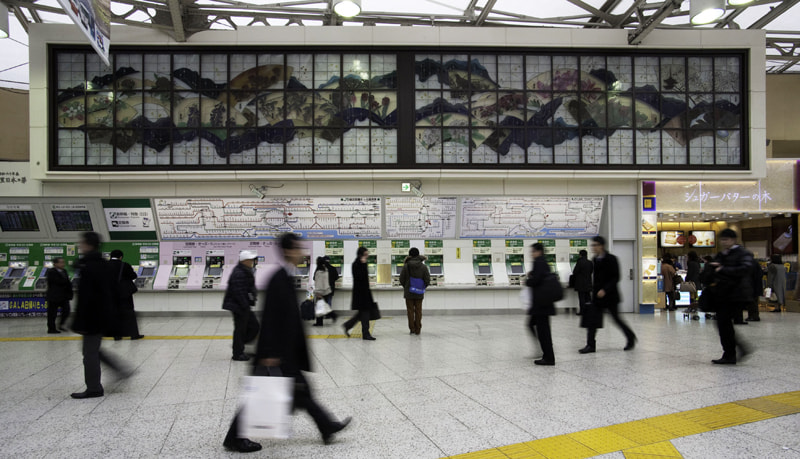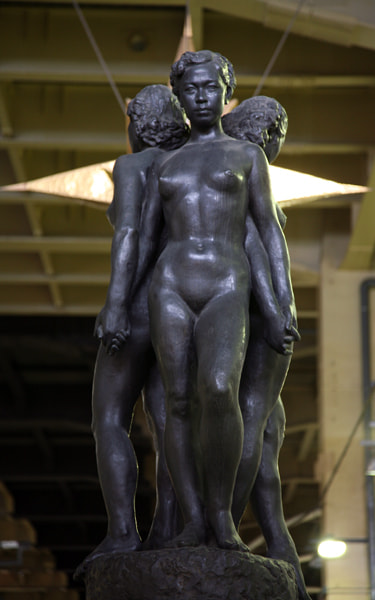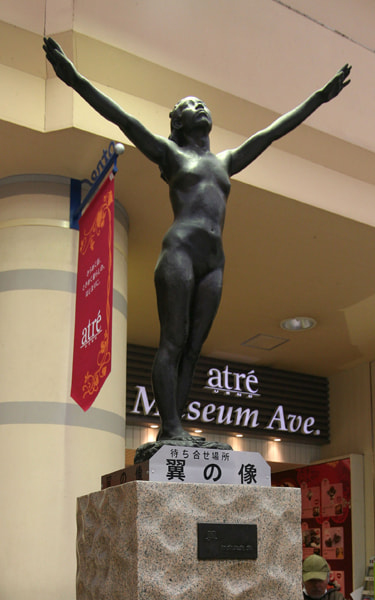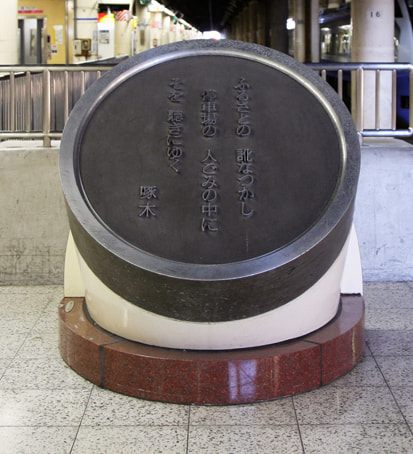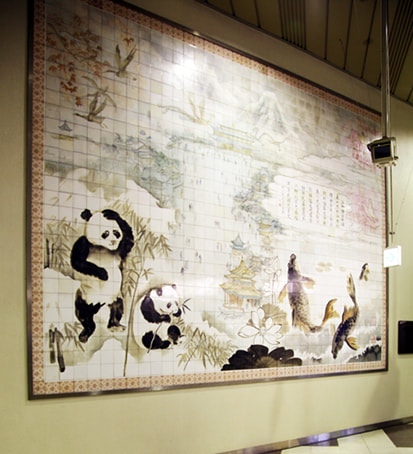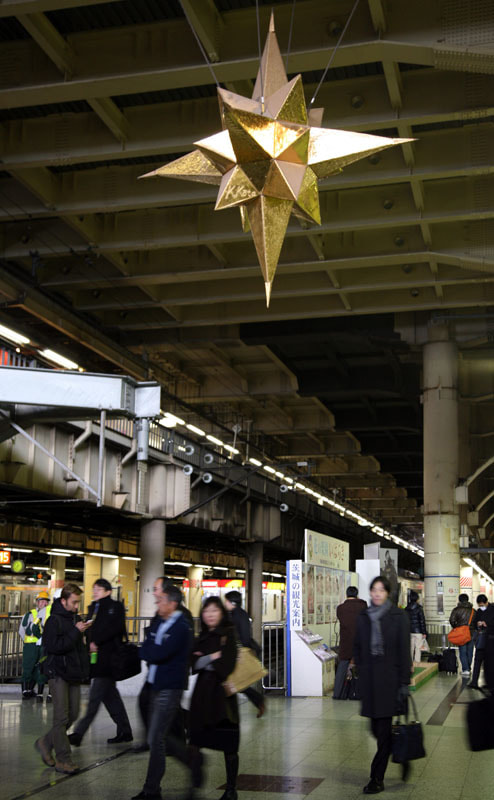"Hometonw, Japanese Flowers" (created in 1985) by Ikuo Hirayama installed at the grand concourse in front of the Central Gate
This is a stained-glass work that was created to commemorate the opening of the Tohoku Shinkansen and the Joetsu Shinkansen in 1985. Names of stations and places on the Tohoku and Joetsu Shinkansen lines are brilliantly depicted on the work. Unfortunately, the light was turned off to save power when this picture was shot.[Click the picture to enlarg

Many art works are exhibited as commemorative objects representing each period in Ueno Station. It looks like a magnificent museum. In addition to works by Ikuo Hirayama, Inokuma Genichiro and Fumio Asakura, many works, including "Wish in the Morning" by Masahiko Yamamoto, "Cat's Cradle" by Masamichi Yamamoto, and "Aomori Nebuta" by Erika Takakuwa are exhibited in Ueno Station. Works, such as "Nanbu Horse, Sado Okesa, Kokeshi Doll," are also placed on the concourse of the Shinkansen.
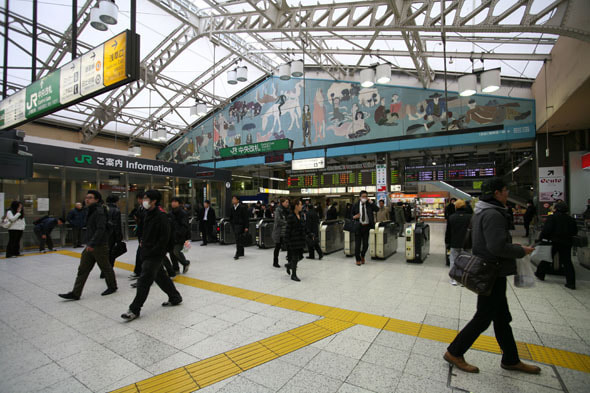
"Freedom" (created in 1951) by Genichiro Inokuma installed above the Central Gate

Four Thriving Seasons in Ueno (picture/calligraphy by Wang Xuezhong)
In celebration of the inauguration of the Tohoku/Joetsu Shinkansen in 1985, this porcelain panel painting was donated by "Ueno Kanko Renmei," or Ueno tourist federation. The picture was drawn by Professor Wang Xuezhong at Tianjin University, and produced in Jingdezhen.

"Star of Hometown" shining above the Central Gate
A poem is inscribed on the floor below the monument: "When I look up at the sky, there is the star of my hometown. The shining and touching star comforts my heart."
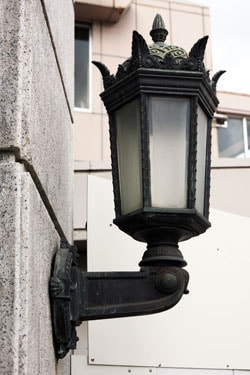
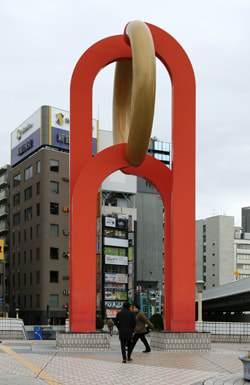
A monument of "Moon/Sun"
A huge monument representing the moon and the sun stands on a pedestrian deck, which is commonly known as "jewelry bridge," leading from the Panda Bridge to Showa-dori Street.
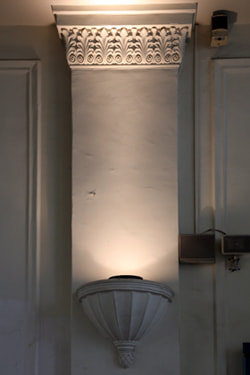
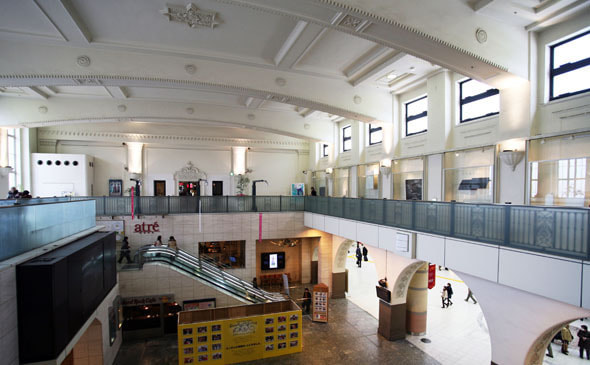
Art works are exhibited at a gallery set up at the upstairs corridor leading to the atre Ueno that includes restaurants and shops.
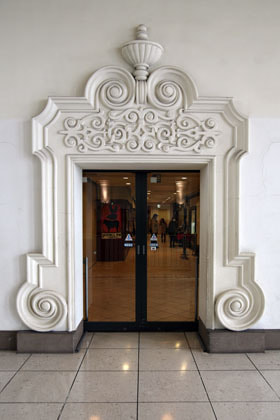
Ornaments that are suggestive of the early Showa Period can be seen here and there.
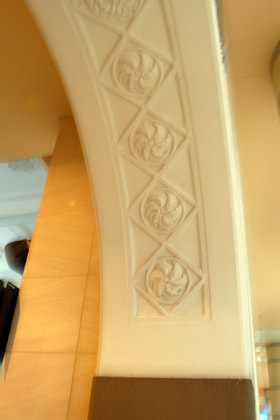
"Star of Hometown" shining above the Central Gate
A poem is inscribed on the floor below the monument: "When I look up at the sky, there is the star of my hometown. The shining and touching star comforts my heart."



A monument of "Moon/Sun"
A huge monument representing the moon and the sun stands on a pedestrian deck, which is commonly known as "jewelry bridge," leading from the Panda Bridge to Showa-dori Street.














